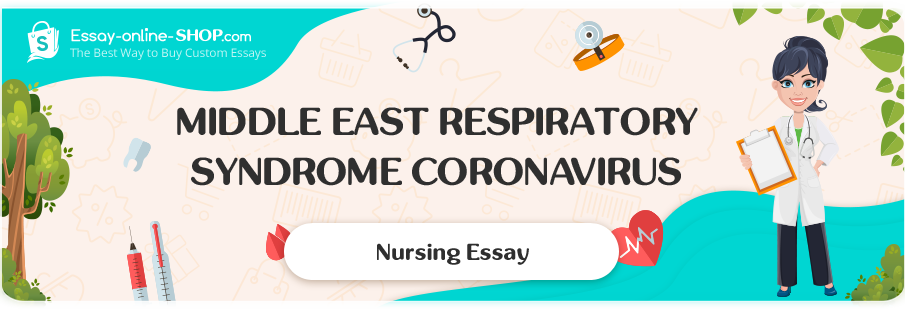
Phenylketonuria (PKU) is a hereditary disorder associated with genetic variations or mutations in the gene responsible for phenylalanine metabolism. The mutations in this particular gene lead to the buildup of phenylalanine in a person’s blood, sometimes to toxic levels when not duly treated (Verduci et al., 2016). Phenylketonuria is an inherited condition that manifests itself as errors in amino acids metabolism and accounts for some cases of mental retardation, because the surge in phenylalanine without treatment can have neurotoxic effects. People with this genetic condition exhibit various symptoms from mild to severe. Infants with the severe form of PKU exhibit no abnormal symptoms in the first few months after birth. However, the signs and symptoms start to emerge in the course of their life. Failure to treat phenylketonuria can lead to irreversible intellectual disability in young children and may also cause growth retardation, psychiatric disorders, seizures, and behavior-related problems (Genetics Home Reference, 2016). Classic phenylketonuria evokes skin disorders, musty odors, as well as fairer skin and hair when compared to family members who do not suffer from this condition. People with the mild form of the abovementioned genetic condition have a reduced risk of suffering brain damage and may not require low-phenylalanine diet for treatment purposes. Some forms of phenylketonuria include classic phenylketonuria, variant phenylketonuria, and non-phenylketonuria hyperphenylalaninemia. The paper examines the prevalence of PKU in the United States and other regions around the world, including the inheritance pattern of this condition, possible areas of counseling to the family mentioned in the case study, and the importance of the information gleaned in advanced practice nursing.
Prevalence of PKU
Phenylketonuria is common in Caucasians. The prevalence of phenylketonuria in the United States appears at one case in every 10,000-15,000 new births. The incidence of the disease varies depending on different populations, geographic locations, and ethnic groups. According to Hardelid et al. (2008), the prevalence of the condition in Chinese, Korean, and European societies stands at one case per every 10,000 live births. Phenylketonuria is less prevalent in people of South Asian and Sub-Saharan descent, which indicates the variation in the rate of occurrence. In Turkey, however, the prevalence is relatively higher with one case of phenylketonuria occurring in every 6,500 live births (Dobrowolski et al., 2011).
The frequency of the disease is relatively higher among cultures that engage in consanguinity as noted in the case of Saudi Arabia, Turkey, and Gaza, which have a prevalence of one case in every 3500-6500 live births (Dobrowolski et al., 2011). Nonetheless, some countries record relatively lower incidence rates as in the case of Finland whose prevalence is one case in every 100,000 live births (Dobrowolski et al., 2011). On the contrary, the prevalence in Latin American is found in one case per every 25,000-50,000 live births while Thailand records less than one case in every 200,000 live births (Blau, van Spronsen, & Levy, 2010). The frequency, however, is extremely low in African countries when compared to other regions. In some countries, the incidence of certain forms of the disease is very high. For instance, the prevalence of the classic form of the genetic condition is very high in Turkey at 47 percent, which is opposite to Spain given that this state records a higher incidence of mild hyperphenylalaninaemia. Evidently, geographic biases exist as far as the incidence of phenylketonuria is concerned considering that different countries and regions have distinctive prevalence rates.
PAH Gene
Genetic mutations or variations in the PAH gene lead to the development of PKU. The PAH gene is responsible for giving instructions for the production of phenylalanine hydroxylase, which assists in the processing of phenylalanine to form tyrosine and other important compounds (Schlegel, Scholz, Ullrich, Santer, & Rune, 2016). The resulting compound tyrosine participates in the composition of various important hormones and other chemicals necessary for neurotransmission. It is also fundamental in the production of melanin, which explains the faint skin and hair color in people with PKU.
Blau (2016) notes that over 950 mutations in the PAH gene may be explained by the development of PKU. The mutations alter single amino acids involved in the formation of phenylalanine hydroxylase. In most cases, mutations involve the replacement of arginine with another amino acid, preferably tryptophan. However, PAH mutations might occur due to the removal of small quantities of genetic material from the PAH gene. The gene is also regarded as Phenylalanine 4-Hydroxylase, phenylalaninase, or PKU1 (Genetics Home Reference, 2016).
- FREE revision (within 2 days)
- FREE title page
- FREE bibliography
- FREE outline (on request)
- FREE e-mail delivery
- FREE formatting
- Quality research and writing
- 24/7/365 Live support
- MA, BA, and PhD degree writers
- 100% Confidentiality
- No hidden charges
- No AI-written content
- Complete Authenticity
- 12 pt. Times New Roman
- Double-spaced/Single-spaced papers
- 1 inch margins
- Any citation style
- Up-to-date sources only
- Fully referenced papers
Inheritance Pattern for PKU
Normally, the disease exhibits an autosomal recessive pattern in which the two copies of the phenylalanine hydroxylase (PAH) gene in each cell exhibit mutations or variations in their genetic composition (Genetics Home Reference, 2016). The mother and the father of a person with this condition have a copy of the variant gene. Unlike their child, the parents have no visible signs and symptoms connected to this autosomal recessive condition. The absence of signs and symptoms of the disease in parents who carry the mutant gene indicates that they have a normal gene. The mutations result in a defective production of phenylalanine hydroxylase, an important enzyme that is responsible for phenylalanine metabolism (Genetics Home Reference, 2016).
Disease Process for PKU
When each of the parents has a copy of the mutant PAH gene, the resulting child suffers from phenylketonuria (Genetics Home Reference, 2016). Despite this fact, the signs and symptoms take a few months to appear in infants with the autosomal recessive disorder. The gene mutation undermines the production and functioning of phenylalanine hydroxylase. The body cannot adequately process this amino acid, which causes a significant increase in phenylalanine in a person’s blood, including other body tissues (Genetics Home Reference, 2016). Brain damage frequently occurs because of the sensitivity of the nerve cells found in the brain to relatively high phenylalanine levels.
Classic phenylketonuria usually manifests itself when there is little or no phenylalanine hydroxylase activity in the body. Consequently, there is a buildup of phenylalanine to levels that have devastating effects on the brain, namely to the point of inducing severe brain damage. Further, classic phenylketonuria is linked with other serious medical conditions, which often occur because of excess phenylalanine in the blood and body tissues. Variant PKU and non-PKU hyperphenylalaninemia have milder signs and symptoms, because the gene mutation in these cases is less severe and allows a certain degree of phenylalanine hydroxylase activity (Genetics Home Reference, 2016).
PKU Case Study
According to this case study, the daughter aged 5 tested positive for PKU at birth, which indicates that the Turkish female and the husband have a copy of the mutant PAH gene. The parents of this child are carriers of these abnormal genes. When the gene copies interact, they produce two carriers: a non-carrier and a PKU positive child based on the autosomal recessive pattern. Therefore, there is 25 percent likelihood that parents with the mutated gene will have a child that is PKU positive (Marble, n.d.). The daughter tested positive for PKU, since the copies from the carrier parents came together as a result of the autosomal inheritance pattern. The two sons, however, may both pass as carriers, or one may be a non-carrier depending on the interactions of the mutant genes.
Regarding the family history of the Turkish female, the inheritance pattern indicates a rather unusual case. One of her siblings tested positive for PKU, but the positive case occurred in the fifth child who is aged 22. It demonstrates that there is a chance that odds could change, especially taking into account that there is a greater likelihood that a child will become a carrier rather than testing positive for PKU. As already noted, all the children have at least one mutant PAH gene, but PKU only occurs in children who inherit two copies of this gene from their parent (Genetics Home Reference, 2016). Of the four siblings, the brother aged 26 has three children, but one died as a result of a brain hemorrhage. The deceased may have been PKU positive considering the inheritance pattern of this condition.
In addition to this, PKU is associated with a brain damage and can even lead to serious medical problems when treatment is not promptly provided, already starting at a tender age. Even in such a way, the brain hemorrhage might have occurred because of a different problem, especially if the mother of these children is not a PKU carrier or does not have the defective PAH gene. Speaking of the autosomal recessive pattern, each of the siblings has the altered PAH gene, which implies that marrying a partner with a copy of this gene will lead to at least one child testing positive for PKU (Genetics Home Reference, 2016). The father and mother of the Turkish female also carry the mutant gene based on the inheritance pattern shown in the family history. It displays an autosomal recessive pattern given that only one of the five children tested positive for PKU. It is acknowledged that one in four children might have PKU when both parents have altered genes (Marble, n.d.). It suggests that there is a high risk of developing PKU in at least one child among the four.
Treatment Recommendations for PKU
Blau, van Spronsen, and Levy (2010) note that phenylketonuria is one of the genetic conditions that is considered as treatable, which implies that the person suffering from this conditions enjoys a fulfilling life. The treatment for PKU involves having a low-phenylalanine diet that starts from infancy to avoid the accumulation of the amino acid in the blood and tissues (Verduci et al., 2016). It is important to adhere strictly to this kind of diet in order to maintain phenylalanine at a minimum level and reduce the adverse effects of excessive phenylalanine. The maintenance of the low- phenylalanine level guarantees normal mental and cognitive growth. Treatment also involves the use of supplements, low-protein foods, grains, and phenylalanine-free formulas for infants (Verduci et al., 2016).
It is recommended for people with PKU to follow the low-phenylalanine diet throughout their lives for optimal mental function and reduced incidence of behavioral problems. On the one hand, people with classic PKU have to adhere strictly to their diet because their bodies can accumulate large amounts of phenylalanine as a result of the severely low phenylalanine hydroxylase activity. On the other hand, people with milder forms of the condition can sometimes deviate from the low phenylalanine diets with little consequences (Verduci et al., 2016). It is possible because their bodies have relatively high phenylalanine hydroxylase activity that can process the amino acids to produce tyrosine.
People with this condition should avoid high protein foods and commodities with artificial sweeteners such as aspartame and saccharin, because they have relatively high quantities of phenylalanine. One can easily make adjustments to the diet depending on phenylalanine levels in the body. A health care professional can add or remove diet components depending on the monitoring results. For infants, there is a gradual addition of low-phenylalanine foods into the diet apart from the special formula to facilitate normal neurological and body growth.
In the case of the 5-year-old child in the case study, it is appropriate to determine whether she is suffering classic PKU, variant PKU, or non-PKU hyperphenylalaninemia. The knowledge about the form of PKU can assist in defining dietary requirements and adjustments over the course of time. The child will require a low- phenylalanine diet, where in case of failure to adhere to it, she can suffer from both behavior-related disorders and mental retardation due to the poor neurological and cognitive development.
You can ask us “write my nursing school essay” on this or any other topic at Essay-Online-Shop.com. Don’t waste your time, order now!
Consequences of Non-Adherence to the PKU Diet
In case she continues to eat a normal diet instead of the low-phenylalanine diet, there is a higher risk that she will experience developmental delay, seizures, or even autism in the course of her life. Brain damage may also occur, provided she is suffering classic PKU, because phenylalanine will accumulate in the blood and body tissues and act as a toxin against brain nerve cells. In case the PKU positive daughter has the mild form of the disease, fewer health problems will arise even with a special diet as the body can still process a small amount of phenylalanine in the diet. Mild PKU will lead to less severe brain damage, and mild hyperphenylalaninemia will not attract any health problems in the absence of a special diet, which is frequently regarded as an important and effective treatment mechanism (Verduci et al., 2016).
Nonadherence to low-phenylalanine can also interfere with school functioning and even trigger mental disability in the first years in a person with the condition. More specifically, attention-deficit hyperactivity disorder (ADHD) is a common condition associated with nonadherence to low-phenylalanine diet. Pregnant women who fail to adhere to the proper nutrition, increase chances of the child developing a small head, suffering from mental retardation, seizures, and even intellectual disability (Ward, Hisley, & Kennedy, 2015). It can also result in fetal growth failure and congenital disabilities. Therefore, it is appropriate for women with PKU who seek to undergo dietary adjustments and monitoring to ensure their bodies have acceptable levels of phenylalanine. In addition, the women should adhere to low-phenylalanine diets throughout the course of their pregnancy to prevent the problems interrelated with nonadherence to specific diets (Marble, n.d.).
PKU Counseling
The parents should understand that each pregnancy means that there is a 25 percent risk that the child will bear two copies of the mutant gene that cause PKU (Plomin, DeFries, Knopik, & Neiderheiser, 2013). There is also a 25 percent possibility that the child that they bear is a non-carrier, and thus a normal child with no risk of getting a PKU positive child in the future according to the status of the spouse. Moreover, there is a 50 percent likelihood that the next child is an unaffected carrier of the altered gene copy (Plomin, DeFries, Knopik, & Neiderheiser, 2013). The other important areas of counseling involve the diet of the PKU positive child.
I would advise the parents to maintain a low-phenylalanine diet to ensure that a child enjoys a normal and fulfilling life with no episodes of behavioral problems, mental disability, or even brain damage. I would refer the parents to genetic counselors and geneticists, because these can provide genetic counseling services, including additional information on dietary management for the PKU positive daughter. I would also send the parents to a nurse practitioner, a registered dietitian, a social worker, and a pediatrician, for the fact that these health care professionals have to work together with the genetic counselor for effective management of the dietary and care-related needs of the PKU positive child.
Application of the Knowledge Gleaned in Clinical Practice
The information gleaned from the PKU case study is important in nursing practice, since understanding the condition, inheritance pattern, signs and symptoms can help a nurse practitioner provide accurate information. A nurse practitioner can understand who to refer the patient to for counseling on the genetic condition and even assist in developing an effective dietary management plan for such a patient, depending on age and monitoring outcomes. As an important part of the team, a nurse practitioner may prescribe a special formula or foods for a PKU positive child.
Conclusion
Phenylketonuria is a genetic condition that follows an autosomal recessive inheritance pattern. The incidence of PKU changes across geographical locations and appears more prevalent in regions that practice consanguinity. There are clear geographical biases in the prevalence of the genetic condition with very few cases occurring in Africa and Asia. For PKU positive patients, it is important to adhere to low-phenylalanine diet to keep the levels as low as possible. Nonadherence can have devastating effects on the health of the patients and can induce congenital disabilities in pregnant mothers. Parents who plan to have another child should seek genetic counseling services from genetic counselors and geneticists. Parents should also find additional assistance from a team comprising a pediatrician, a nurse practitioner, a registered dietitian, a social worker, and a genetic counselor.





